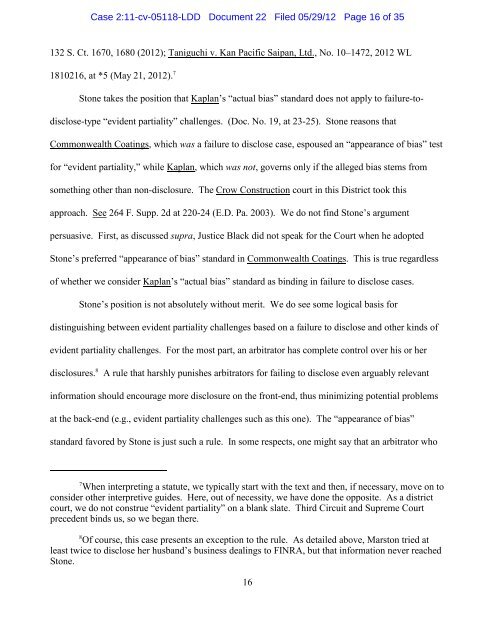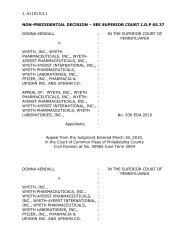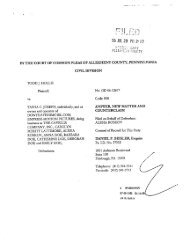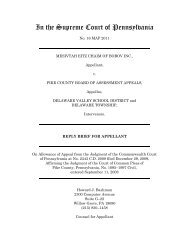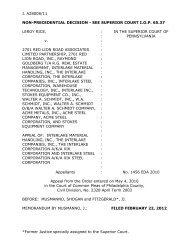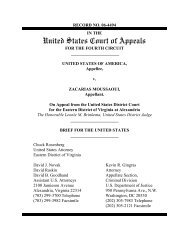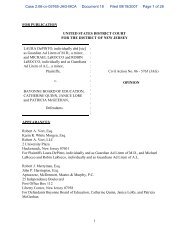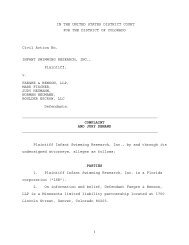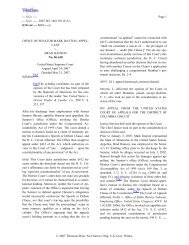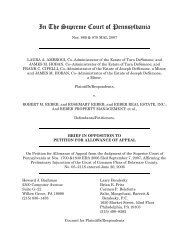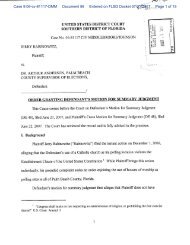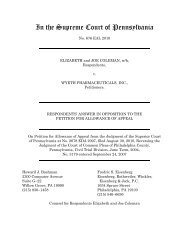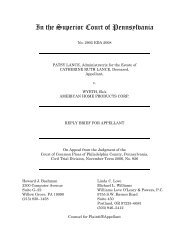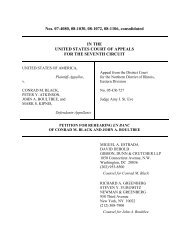Stone v. Bear, Stearns & Co., Inc. - How Appealing
Stone v. Bear, Stearns & Co., Inc. - How Appealing
Stone v. Bear, Stearns & Co., Inc. - How Appealing
You also want an ePaper? Increase the reach of your titles
YUMPU automatically turns print PDFs into web optimized ePapers that Google loves.
Case 2:11-cv-05118-LDD Document 22 Filed 05/29/12 Page 16 of 35<br />
132 S. Ct. 1670, 1680 (2012); Taniguchi v. Kan Pacific Saipan, Ltd., No. 10–1472, 2012 WL<br />
1810216, at *5 (May 21, 2012). 7<br />
<strong>Stone</strong> takes the position that Kaplan’s “actual bias” standard does not apply to failure-to-<br />
disclose-type “evident partiality” challenges. (Doc. No. 19, at 23-25). <strong>Stone</strong> reasons that<br />
<strong>Co</strong>mmonwealth <strong>Co</strong>atings, which was a failure to disclose case, espoused an “appearance of bias” test<br />
for “evident partiality,” while Kaplan, which was not, governs only if the alleged bias stems from<br />
something other than non-disclosure. The Crow <strong>Co</strong>nstruction court in this District took this<br />
approach. See 264 F. Supp. 2d at 220-24 (E.D. Pa. 2003). We do not find <strong>Stone</strong>’s argument<br />
persuasive. First, as discussed supra, Justice Black did not speak for the <strong>Co</strong>urt when he adopted<br />
<strong>Stone</strong>’s preferred “appearance of bias” standard in <strong>Co</strong>mmonwealth <strong>Co</strong>atings. This is true regardless<br />
of whether we consider Kaplan’s “actual bias” standard as binding in failure to disclose cases.<br />
<strong>Stone</strong>’s position is not absolutely without merit. We do see some logical basis for<br />
distinguishing between evident partiality challenges based on a failure to disclose and other kinds of<br />
evident partiality challenges. For the most part, an arbitrator has complete control over his or her<br />
8<br />
disclosures. A rule that harshly punishes arbitrators for failing to disclose even arguably relevant<br />
information should encourage more disclosure on the front-end, thus minimizing potential problems<br />
at the back-end (e.g., evident partiality challenges such as this one). The “appearance of bias”<br />
standard favored by <strong>Stone</strong> is just such a rule. In some respects, one might say that an arbitrator who<br />
7<br />
When interpreting a statute, we typically start with the text and then, if necessary, move on to<br />
consider other interpretive guides. Here, out of necessity, we have done the opposite. As a district<br />
court, we do not construe “evident partiality” on a blank slate. Third Circuit and Supreme <strong>Co</strong>urt<br />
precedent binds us, so we began there.<br />
8Of<br />
course, this case presents an exception to the rule. As detailed above, Marston tried at<br />
least twice to disclose her husband’s business dealings to FINRA, but that information never reached<br />
<strong>Stone</strong>.<br />
16


